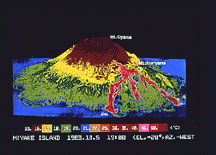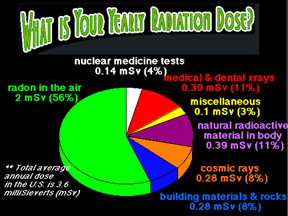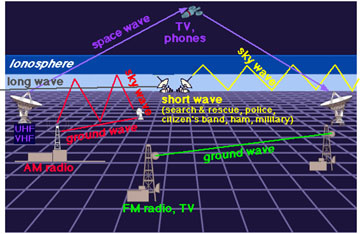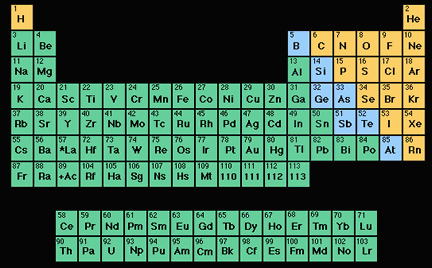Click on image for full size
Windows to the Universe original artwork.
Wavelength
There are many kinds of waves all around us. Everyone knows about waves of water in the ocean. Did you also know that sound travels through the air in waves? Or that light is actually made up of waves of electromagnetic energy?
The length of a wave is called, well, its "wavelength". If you think about a wave in the ocean, its wavelength is the distance from the top of one wave (called the wave's "crest") to the top of the next wave. You can also measure the distance from the lowest point between two waves (called the wave's "trough") to the next trough. You should get the same distance either way.
The wavelengths of ocean waves we see at the beach are usually 10 or so meters (33 feet) or longer. Sound waves that humans can hear have wavelengths between about 2 cm (an inch) and 17 meters (56 feet). Waves of electromagnetic radiation that we see as light have really, really short wavelengths between 400 and 700 nanometers (a nanometer is one billionth of a meter!).
A wave also has a "frequency". The frequency is how often a crest goes by. The frequency of a wave depends on how fast the wave is moving. It also depends on the wavelength of the wave. Imagine two sets of waves that have the same speed. If one set has a longer wavelength, it will have a lower frequency (more time between waves). If the other set has a shorter wavelength, it will have a higher frequency (less time between waves). Wavelength and frequency go opposite of each other. Shorter wavelengths mean higher frequencies, while longer wavelengths mean lower frequencies.
Sound waves with a wavelength around 34 cm (about a foot) have a frequency of 1,000 hertz. A hertz is one wave per second. So a thousand sound waves can enter your ear in a second! Sound waves travel much faster than normal water waves. Sound waves move through the air at around 343 meters/second (767 miles/hour).
Light moves even faster AND has shorter wavelengths. These combine to give light extremely high frequencies. Red light has a wavelength of about 682 nanometers. Its frequency is around 440 terahertz. That's 440,000,000,000,000 hertz. That's a whole lot of waves going by in a second!















